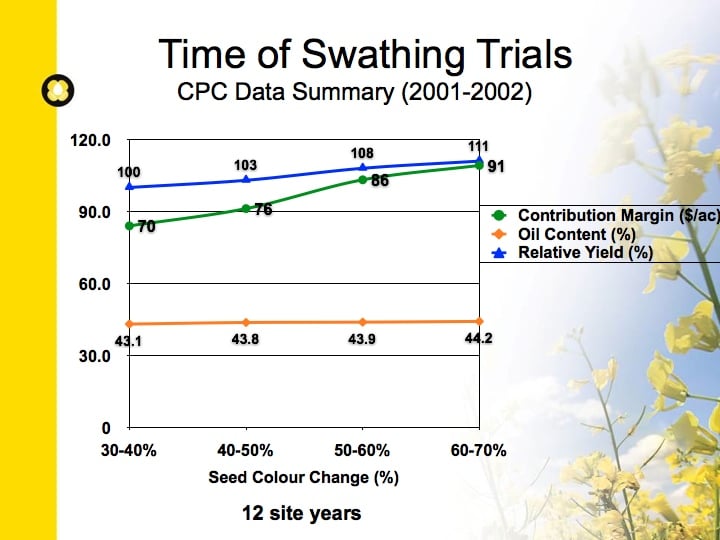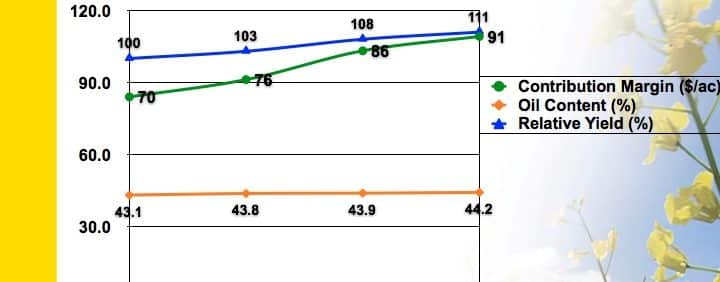The ideal time to swath for yield and quality is when 50-60% of seeds on the main stem are turning color. At this stage, most seeds on the side branches will have reached maturity and will ripen in the swath.
This may not be a safe assumption when very low plant counts result in heavily branched canola plants. To make sure most of the pods on these side branches are mature, remove seeds from the latest pods and roll them around between your finger and thumb. If they roll, they have a chance of ripening after swathing. If they turn to mush, these seeds will not mature if swathing at that stage. Waiting longer to swath, if possible, could benefit this crop — as long as most of the yield potential is deemed to be in these later branches.
Growers with many canola acres to harvest will not likely be able to swath all canola at 50-60% seed colour change. CCC research shows that canola swathed at 30-40% seed colour change on the main stem yields about 8% less than canola 50-60% seed colour change, but 30-40% seed colour change is a good starting point for growers with a lot of canola to harvest. (See the graphs below.) Going earlier is not recommended. Starting at 10 to 20% or earlier could lead to lower yield as well downgrading or harvesting delays from green seed, especially if warm and windy conditions promote rapid dry down. This will not give the chlorophyll clearing enzymes time to complete their job.
For fields with uneven maturity. Delay swathing of the least mature areas or plants until there is at least some seed color change in the lower pods (and firm green seed in the least mature pods), provided this does not put the crop at risk of frost damage or excessive shattering of the ripest plants. Here’s the key: Don’t put the best and biggest part of the crop at risk of shelling in order to save a few acres of later, higher-risk and possibly low yielding canola.
Click to download this PDF: Swathing and Harvesting Multiple Stage Crops
Click here for a Canola Swathing Guide
Click here for a video


